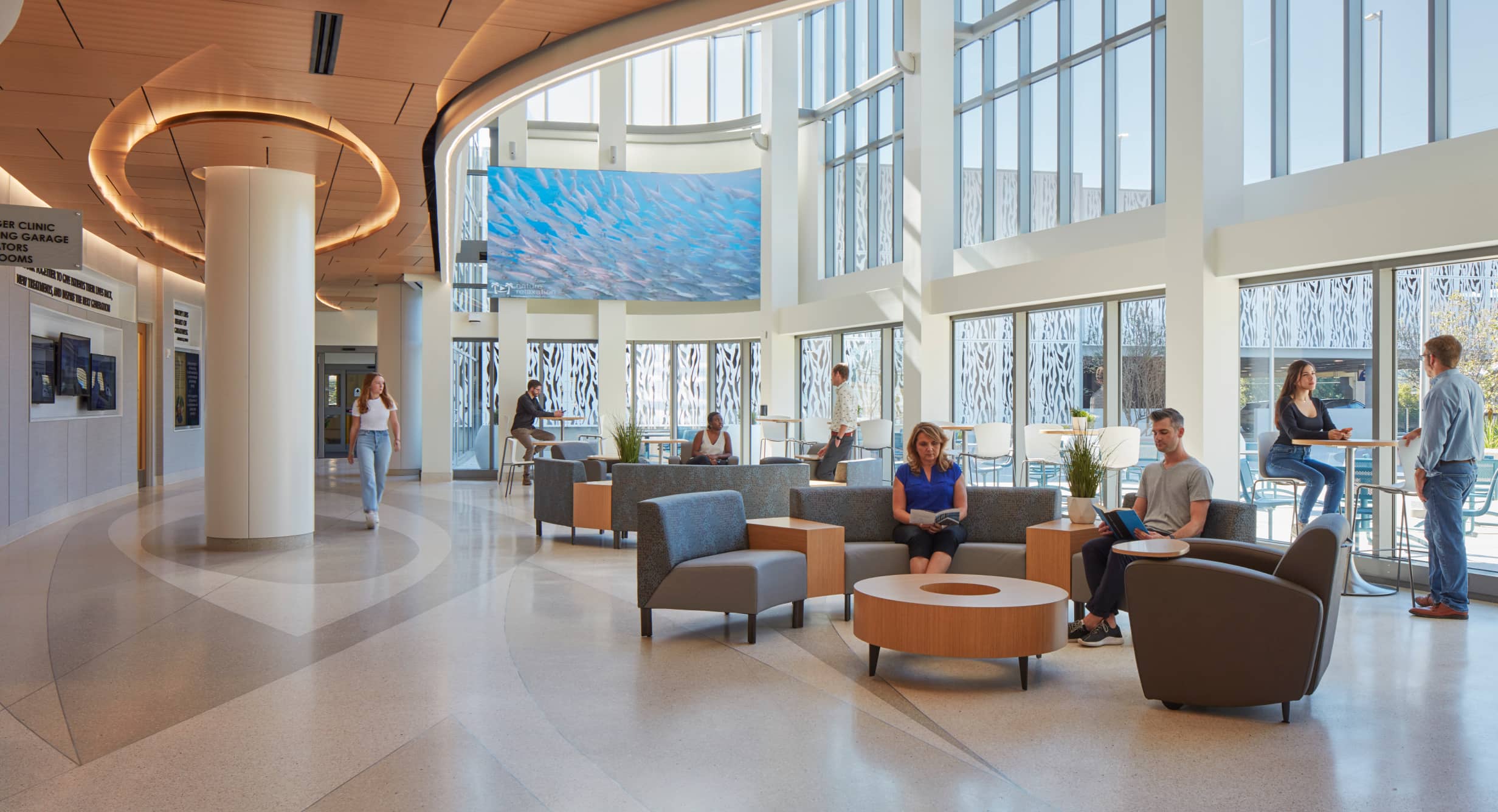
Designing Health Care Environments for Community Integration and Empowerment
As a part of its quarterly Limitless series, global design firm HKS recently hosted a panel to discuss how health care design can facilitate community integration and empowerment.
Nupur Gupta, Senior Medical Planner at HKS, moderated the panel and introduced each of the panelists and their community health care practices. Panelists were Jessica Duckworth, COO of The Rose Breast Center for Excellence; Dr. Andrea Caracostis, CEO of the Asian American Health Coalition dba HOPE Clinic; and Joel Miller Kalmin, facilities designer manager at Legacy Communities Health Services.
Design That Honors Community Identity
Hospitals and clinics can be unwelcoming and impersonal institutions, but many health care and design professionals are working to change this narrative with inviting and community-oriented health care design.
HOPE Clinic is a community health care provider that serves patients from 90 countries of birth in 60 languages. The clinic launched in 2002 in a Chinese community center and continues to serve a large Asian and Hispanic population at its five locations in the Houston area.
To honor the communities it serves, HOPE clinics have prayer rooms for Muslim patients and use colors and themes in the design that are significant to Asian and Hispanic communities. Outdoor spaces display murals and cultural decor such as Chinese lanterns.
“I think that we forget that, if we want people to engage in their health, we also have to provide them a safe space where they feel respected, and they feel like people are putting their needs first above everything else,” Dr. Caracostis said.
Legacy Community Health Services launched in 1978 at the Montrose Clinic to provide STD prevention services to gay men in Houston and now operates more than 50 facilities. Its Southwest Houston clinic is home to 70 different ethnicities. Drawing inspiration from Latin and African culture, the exterior of the clinic is adorned by colorful panels to represent woven textiles. The clinic also features stools with fabric designed by patients.
At Legacy’s Fifth Ward clinic, the community is represented with exterior “Healing Hands” murals by local artist Reginald Adams.
“The murals feature larger-than-life hands with palms outreached surrounded by color fields that represent the chakras,” Kalmin said. “Community members, children and parents alike went to the studio, and their hands are actually part of this permanent mural.”
Meeting Patients Where They Are
Duckworth said that transportation and time constraints are a major barrier to accessing health care. To reduce these barriers, The Rose Breast Center of Excellence operates five mobile mammography coaches to reach patients in their communities and perform life-saving screening services. Founded in 1986 in a 915-square-foot (85-square-meter) space, The Rose now sees 40,000 patients a year across 43 counties in Greater Houston and Southeast Texas through its mobile mammography fleet. The fleet is the largest in Texas.
According to The Rose, 77% of its mobile mammography patients would not have received their annual screening mammogram if they didn’t visit one of its coaches.
“We got to most of the local ISDs to be able to set up a mobile van there so the teachers don’t have to take off, they can just walk out,” Duckworth said. “We got to business, as well, to be able to provide those services.”
In the last five years, Legacy has partnered with schools to offer a variety of health services — such as behavioral health, immunization and dental care — to students during school hours. Parents of students who are minors can enroll their students in the program by signing a consent form for them to be treated by the Legacy team at school.
“The child doesn’t have to miss school, and either guardian or parent doesn’t have to miss work for the child to get the care that they need,” Kalmin said. “That’s a really important niche that is not being served.”
Integration of Care: A “One-Stop Shop”
Dr. Caracostis said that, for many patients, having to return to the clinic at a later date or travel to another clinic for additional care is burdensome as it causes them to be away from their families or take time off work.
“Being able to provide dental, vision and other services in that same space and on that same day is really critical for families,” Dr. Caracostis said. “Because a lot of our families’ wages are on an hourly basis, and every time they take off to go to a medical appointment, it’s dollars off their paycheck.”
Duckworth also shared the value of health care environments acting as a “one-stop shop” for patients.
“If they’re able to go and get all the services they need, they’re going to be more compliant and improve their health outcomes because they’re going to get all of that done in the place that they trust versus having to travel all over to different clinics to be able to receive those services,” Duckworth said.
Engaging with Communities
The Rose and Legacy both have dedicated community engagement teams, and because of data collected in community outreach, Legacy determined a gap in senior primary care. It now has three primary care facilities designed specifically for seniors, featuring wider hallways to better accommodate wheelchairs and exam chairs instead of exam beds.
When HOPE Clinic built its newest facility, it held a visioning session inviting community members to share their hopes for the new space. The clinic features social spaces for community events such as a culinary program and an upcoming concert series.
“We’re all super proud that we provide fabulous services, but that doesn’t mean we’re good community partners,” Dr. Caracostis said. “Being a community partner means you get off your soap box and you listen to the communities and open your doors for their priorities and not necessarily yours.”
View the full webinar recording here

